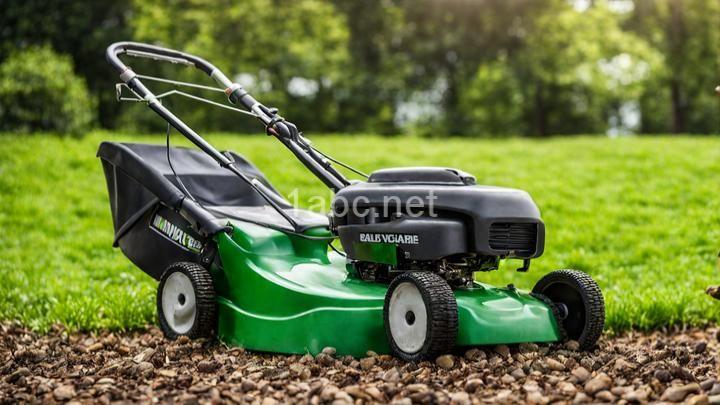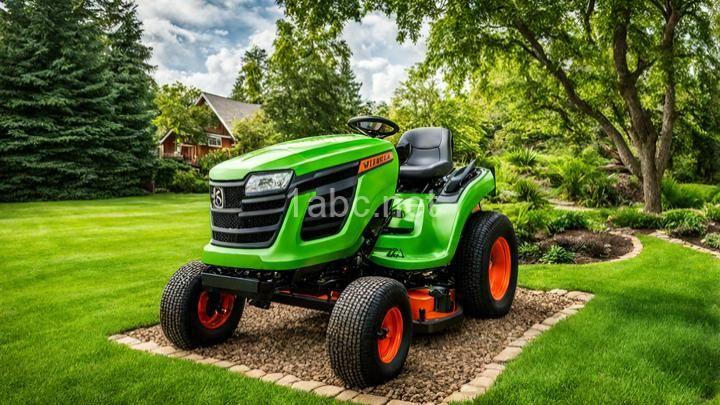The Ultimate Guide to Achieving a Perfect Lawn: Weed Control Methods

Introduction:
Welcome to our ultimate guide on achieving a perfect lawn! In this article, we'll focus on effective weed control methods that will help you maintain a beautiful and healthy lawn. We understand that dealing with weeds can be frustrating, but with the right techniques, you can keep them at bay and enjoy a lush green lawn all year round.
I. Understanding Weeds:
Weeds are unwanted plants that grow in your lawn and compete with your desired grass for nutrients, sunlight, and water. They can have a negative impact on the overall health and appearance of your lawn. Common types of weeds found in lawns include dandelions, crabgrass, clover, and chickweed. It's important to control weeds because they can weaken your grass, create bare patches, and make your lawn look unkempt.
II. Preparing Your Lawn for Weed Control:
Before implementing weed control methods, it's crucial to prepare your lawn properly. Start by ensuring that your soil is healthy and nutrient-rich. This can be achieved through regular aeration, fertilization, and pH testing. Proper mowing and watering techniques are also essential in preventing weed growth. Mow your lawn at the appropriate height for your grass type and water deeply but infrequently to promote deep root growth. Lastly, identify problem areas in your lawn where weeds tend to thrive, such as areas with compacted soil or insufficient sunlight.
III. Manual Weed Control Methods:
a) Hand Pulling:
Hand pulling is an effective method for removing weeds, especially when dealing with small infestations or individual weeds. Before pulling, it's important to identify which weeds can be effectively hand-pulled. Weeds with shallow roots, such as dandelions, can be easily pulled out. To ensure successful removal, grasp the weed as close to the base as possible and gently pull upwards, making sure to remove the entire root system. Tools such as a dandelion weeder or a hand trowel can assist in the process.
b) Digging or Trenching:
For stubborn weeds with deep taproots or spreading rhizomes, digging or trenching may be necessary. This method involves using digging tools such as a garden fork or a hoe to loosen the soil around the weed and remove it along with its root system. It's important to be cautious while digging to avoid damaging the surrounding grass or plants. Safety precautions such as wearing gloves and using proper body mechanics should also be considered to prevent strain or injury.
IV. Chemical Weed Control Methods:
a) Selective Herbicides:
Selective herbicides are designed to target specific weeds without harming your grass. Before applying selective herbicides, it's important to identify the type of weed you're dealing with and choose an appropriate herbicide. Follow the instructions provided by the manufacturer for proper application and dosage. Safety guidelines should be followed, such as wearing protective clothing and avoiding contact with the herbicide before it dries.
b) Non-selective Herbicides:
Non-selective herbicides are effective for controlling persistent or invasive weeds that are difficult to remove manually. However, they can also harm desirable plants if not used carefully. It's important to apply non-selective herbicides only to the targeted weeds, avoiding contact with surrounding plants or water sources. Proper application techniques, such as using a spray bottle or a brush, should be followed. Dosage guidelines provided by the manufacturer should also be followed to ensure effective weed control.
V. Natural Weed Control Methods:
a) Mulching:
Mulching is a natural and effective method for suppressing weed growth. Organic mulches, such as wood chips, straw, or compost, can be applied to the soil surface to create a barrier that prevents weed seeds from germinating and blocks sunlight from reaching existing weeds. It's important to apply mulch at a depth of 2-4 inches and maintain a weed-free zone around desirable plants. Regular maintenance, such as topping up mulch and removing any weeds that manage to penetrate the mulch layer, is necessary to keep your mulch weed-free.
b) Vinegar-Based Weed Killers:
Vinegar can be used as a natural herbicide to kill weeds. It works by drying out the leaves and disrupting the plant's cellular structure. To make a homemade vinegar-based weed killer, mix white vinegar with water at a ratio of 1:1 and add a few drops of dish soap to help the solution adhere to the leaves. Spray the solution directly onto the weeds, making sure to avoid contact with desirable plants. It's important to note that vinegar-based weed killers are non-selective and can harm any plant they come in contact with, so use them carefully and sparingly.
VI. Preventive Measures for Long-Term Weed Control:
To achieve long-term weed control, it's important to establish a regular lawn maintenance routine. This includes proper mowing, watering, fertilizing, and aerating your lawn. Mow your lawn at the appropriate height for your grass type to promote healthy growth and discourage weed growth. Water deeply but infrequently to encourage deep root growth and avoid creating a favorable environment for weeds. Regular fertilization and aeration will help keep your grass healthy and strong, making it less susceptible to weed infestation. Additionally, implementing cultural practices such as overseeding and maintaining good soil health will help prevent weeds from establishing.
Conclusion:
Congratulations! You now have the ultimate guide to achieving a perfect lawn through effective weed control methods. Remember, maintaining a beautiful and healthy lawn requires consistent effort, but with the knowledge shared in this guide, you'll be well-equipped to tackle any weed-related challenges that come your way. Enjoy your lush green paradise!
We hope you find this guide helpful in your quest for a perfect lawn. If you have any further questions or need additional assistance, feel free to reach out to us. Happy gardening!
FREQUENTLY ASKED QUESTIONS
What is the purpose of this guide?
The purpose of this guide is to provide you with valuable information and guidance on various topics related to our brand. Whether you're looking for tips on beauty and fashion, seeking advice on personal development, or simply interested in staying updated with the latest trends, this guide is here to help. We aim to empower and inspire you through our content, catering to your needs and interests. By providing informative and engaging articles, we strive to assist you in enhancing your lifestyle and embracing your unique individuality. So, dive in and let us be your companion on this journey of self-discovery and personal growth.
What are some common types of weeds that can invade my lawn?
There are several common types of weeds that can invade your lawn. Some of these include:
-
Dandelions: These broadleaf weeds have yellow flowers and fluffy seed heads that spread easily.
-
Crabgrass: This annual grassy weed spreads rapidly and can quickly take over your lawn if left untreated.
-
Clover: This weed has three-leaf clusters and can be found in both white and red varieties. It tends to thrive in lawns with poor soil conditions.
-
Plantain: This broadleaf weed has distinctive oval-shaped leaves and can tolerate a wide range of growing conditions.
-
Thistles: These prickly weeds have spiky leaves and purple or pink flowers. They can be difficult to remove, as they have deep roots.
-
Creeping Charlie: Also known as ground ivy, this low-growing weed has round, scalloped leaves and small purple flowers. It spreads quickly and can be challenging to control.
It's important to identify and address these common weeds early on to prevent them from taking over your lawn. Regular maintenance, such as proper mowing, watering, and fertilizing, can also help create a healthy lawn that is more resistant to weed invasions.
Are chemical herbicides the only option for weed control?
Chemical herbicides are not the only option for weed control. There are several alternative methods that can be used depending on the situation and preferences.One option is manual weed control, which involves physically removing weeds by hand or using tools such as hoes or weed pullers. This method can be effective for small areas or when dealing with specific types of weeds.
Another option is organic weed control, which involves using natural products or techniques to suppress or eliminate weeds. Some examples include mulching with organic materials like straw or wood chips, using vinegar or salt solutions as a natural herbicide, or employing beneficial insects or animals to eat or control the weeds.
Cultural practices can also play a role in weed control. These include techniques such as proper watering and fertilization to promote healthy plants that can better compete with weeds, as well as crop rotation and planting cover crops to prevent weed growth.
Additionally, there are mechanical weed control methods available, such as mowing or using a weed trimmer to cut down weeds. This can be effective for larger areas or when dealing with fast-growing weeds.
It's important to note that the effectiveness of these alternative methods may vary depending on the specific weed species and the scale of the weed problem. In some cases, a combination of different methods may be necessary for the best results.
Ultimately, the choice of weed control method depends on factors such as the type of weeds, the size of the area, and personal preferences. It's always a good idea to consider the potential environmental impact and choose the most appropriate method for your specific situation.
How do I identify the type of weed in my lawn?
Identifying the type of weed in your lawn can be a helpful step in effectively managing and maintaining your lawn's health. Here are some steps you can take to identify the type of weed:
-
Observe the characteristics: Take a closer look at the weed and note its physical characteristics. Pay attention to the shape and color of the leaves, the arrangement of the leaves on the stem, and any unique features like flowers or seed heads.
-
Consult a field guide or online resources: There are many field guides and online resources available that provide detailed information and images of different weed species. These resources can help you compare the characteristics you observed with known weed species to narrow down the possibilities.
-
Seek expert advice: If you're still unsure about the weed's identity, consider reaching out to a local horticulturist, landscaper, or your county's cooperative extension office. They have the knowledge and expertise to help you identify the weed and offer guidance on how to manage it.
-
Consider your region: Keep in mind that certain weeds may be more prevalent in specific regions. Knowing your location can also help narrow down the possibilities when identifying the weed.
Remember, correctly identifying the weed is crucial for implementing the most effective control strategy. Once you have identified the weed, you can explore appropriate methods to remove or manage it, whether it's through manual removal, herbicides, or other eco-friendly approaches.



